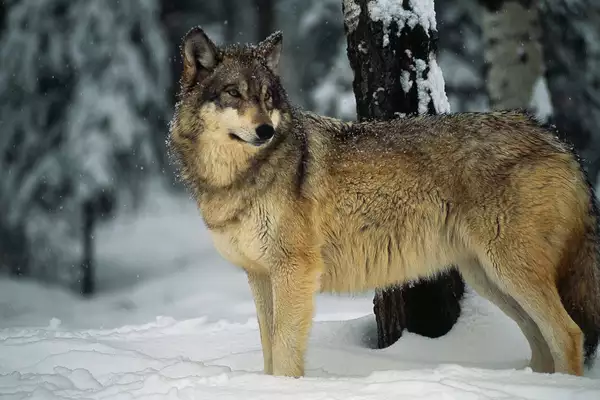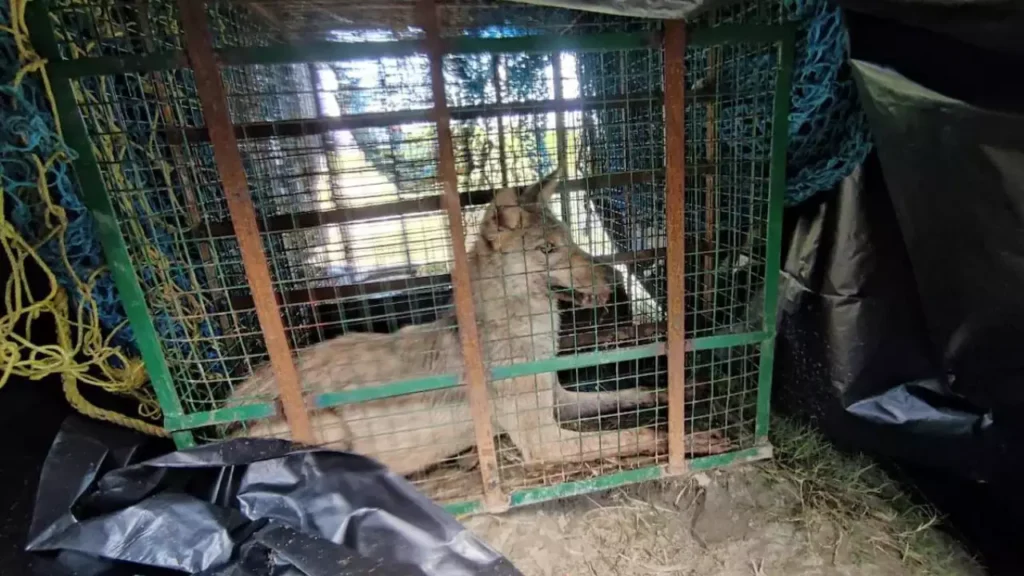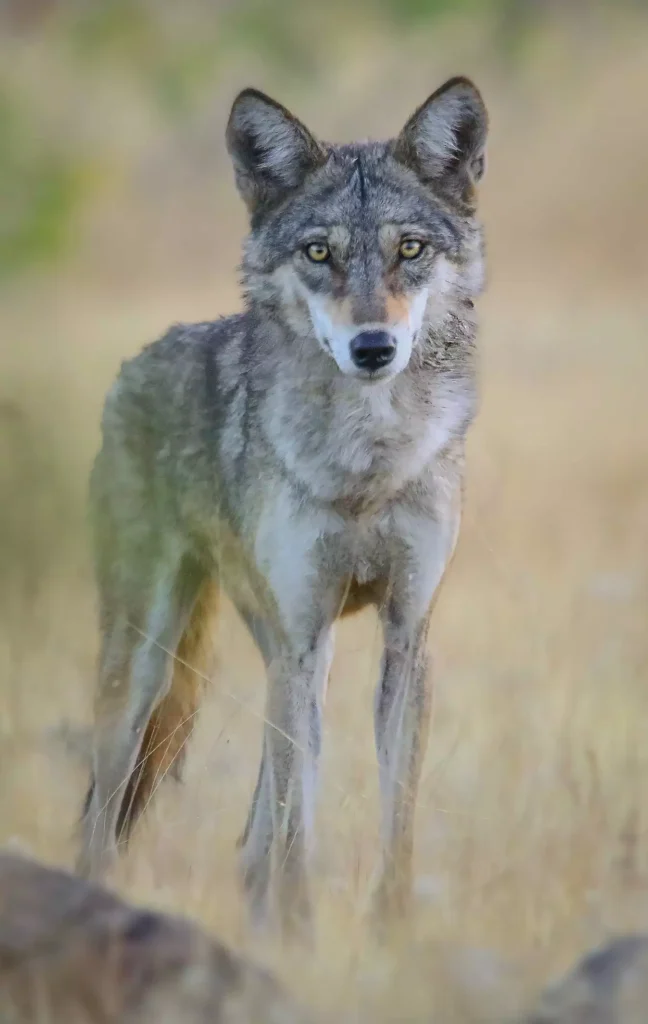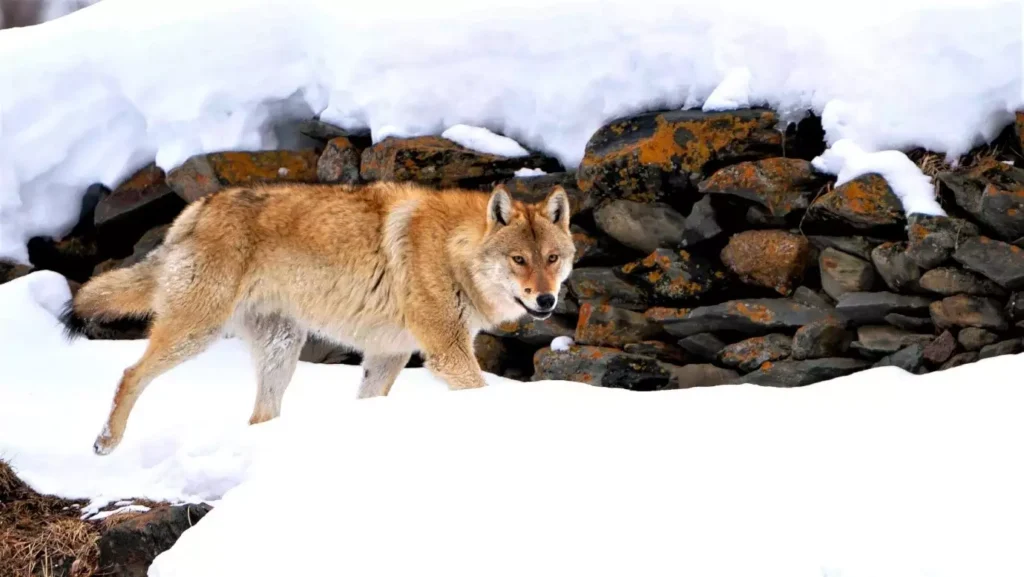A recent man-eating wolf attack in Bahraich, Uttar Pradesh, has put around 35 villages on high alert.
- In response, forest officials have launched ‘Operation Bhediya’ to capture the wolves involved.
About Grey Wolf (Canis lupus):
- Grey wolves are canines with long bushy tails that are often black-tipped.
- Their coat color typically consists of a mix of gray and brown with buffy facial markings and undersides, although the color can vary widely from solid white to brown or black.
- They resemble a large German shepherd in appearance.
Physical Characteristics:
- Size: Wolves vary in size depending on their geographic location. Wolves in the north tend to be larger than those in the south.
- Body Length: The average length of a wolf’s body is three to five feet.
- Tail Length: Their tails usually measure one to two feet long.
- Weight: Females typically weigh 60 to 100 pounds, while males weigh 70 to 145 pounds.
Behavioural Characteristics:
- Grey wolves are highly social, typically living in packs of 6-8 individuals.
- They are capable of running at very high speeds and are monogamous, following a male dominance hierarchy.
- Communication within the pack is achieved through various vocalizations and scent-marking.
India is home to two species of wolves:
- Indian Wolf (Canis lupus pallipes): Found in peninsular India, including states like Rajasthan and Gujarat.
- Himalayan Wolf (Canis lupus chanco): Found in the upper trans-Himalayan ranges.
Conservation Status:
- IUCN:
- Least Concern (Grey Wolf)
- Vulnerable (Himalayan Wolf).
- Wildlife Protection Act, 1972: Schedule I.
About Indian Wolf (Canis lupus pallipes):
- The Indian Grey Wolf is a medium-sized predator, typically measuring 26-38 inches in length and weighing between 40-60 pounds.
- It has a distinctive greyish-brown coat with a paler underside and sharp, pointed ears.
Habitat:
- Highly adaptable, these wolves can be found in deserts, grasslands, and scrublands across various regions in India.
Diet:
- Primarily carnivorous, feeding on small to medium-sized mammals like deer, rodents, and sometimes livestock.
Threats:
- Habitat loss,
- Human-wolf conflicts, and
- Illegal hunting.
Conservation Status:
- IUCN Red List: Endangered.
About Himalayan Wolf (Canis lupus chanco):
- Also known as Tibetan wolves, these are prominent lupine predators found at altitudes above 4,000 meters.
- They are genetically distinct from other grey wolves and are adapted to live in low oxygen (hypoxic) conditions at high altitudes.
Distribution:
- In China, found on the Tibetan Plateau in Gansu, Qinghai, Tibet, and western Sichuan.
- In India, they are present in Ladakh and the Lahaul and Spiti region of Himachal Pradesh.
Threats:
- Illegally hunted for their fur and body parts, including paws, tongues, and heads.
Conservation Status:
- IUCN: Vulnerable
- CITES: Appendix I
- Wildlife Protection Act, 1972: Schedule I
Ref: Source
| UPSC IAS Preparation Resources | |
| Current Affairs Analysis | Topperspedia |
| GS Shots | Simply Explained |
| Daily Flash Cards | Daily Quiz |
Frequently Asked Question:
What is the conservation status of the Himalayan Wolf?
The Himalayan Wolf is classified as Vulnerable by the IUCN.
Where are Indian and Himalayan wolves found?
Indian wolves are found in peninsular India, while Himalayan wolves inhabit the upper trans-Himalayan ranges
How are Himalayan Wolves adapted to high altitudes?
Himalayan Wolves are genetically distinct and adapted to survive in low oxygen conditions at high altitudes.





